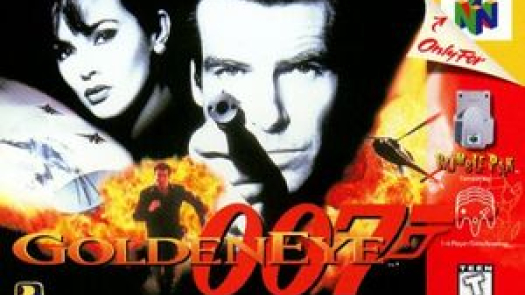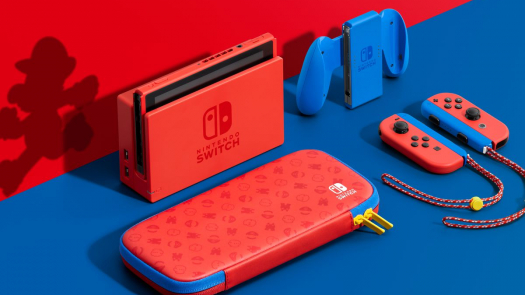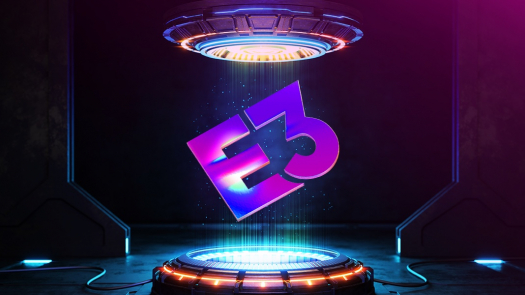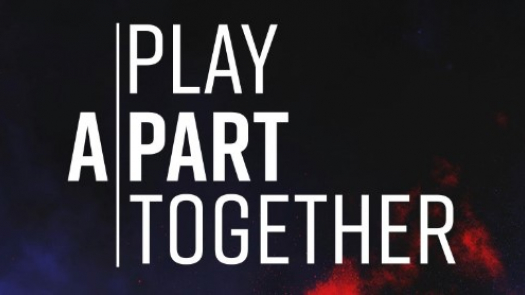With every good, there’s bad. With every bad, there’s some good. Keeping this in mind, people are pissed about a certain Star Wars Battlefront II with loot boxes. I want to delve a little deeper into loot boxes and microtransactions and explain exactly what went wrong and what could have gone right, if they had done things a little differently.
Star Wars Battlefront II is, without a doubt, not a groundbreaking game. Stripping away the loot boxes, disastrous controversy, and corporate greed, it’s not a terrible game though. The average player could knock out the original single-player campaign in around 5 to 7 hours, depending on their skill level. The addition of that, plus the arcade mode was the main concern that the previous game’s critics always bring up. But, in the end, in a world where people want to face each other, the multiplayer is what we count on for the majority of our time within the game. This is where Battlefront II starts to show a rip in the seams.
All in all, the multiplayer is not terrible. The part people keep bringing up is the need for everything to be unlocked from the get-go. “How dare EA make Luke and Darth Vader stuck behind the need for unlock,” I see often online being said. “Why would I buy a Star Wars game and not be able to play as either of them?” To those people, I ask if they’ve ever played a Star Wars game in their life and if not, then I can refer them to dozens of games that neither of those characters even show up. The other argument is that the game makes people pay to get the full game, which is just entirely wrong. But, I digress. We’re here to get to and nitpick the real culprit of our ire: loot boxes.
Blindly Purchasing

Loot boxes, by our definition, are randomized items that can be purchased by some form of currency (either in-game or out-of-game). Generally, there’s multiple items in a loot box to make the price “worth it”, but not always. Where many games out there keep the currency completely within the game itself, some, like free-to-play or freemium games allow players to spend real money to up their game. In the case of Battlefront II, things started out very murky. Battlefront II opted to give what they felt should be a well-rounded approach to the matter. Like most games out there with loot boxes, EA decided to include crafting material, in-game credits (currency), emotes, and victory poses. The troublesome aspect is they they included the game’s primary upgrade system, Star Cards, into the mix as well. Star Cards are used within the game to equip better stats and skill sets to the playable assortment in the game. By introducing an out-of-game ability to upgrade, this broke the game. This is where things turned ugly, legitimately.
So, after trying the Beta and hearing all the rumors from the press copies of the game, the gamers took to Reddit. Even some countries started investigating into whether loot boxes are considered gambling or not and if they should be treated as such. In the end, it actually worked. Seriously, EA listened (well, mostly). They turned off the out-of-game currency option just prior to release. This hit EA hard enough that the media didn’t have enough real time to get their updated opinions out about the game, which in some cases, improved the scores they would have given. Now, here’s the question: what did we learn from this fiasco?
If your answer is that loot boxes are bad, you’d be partially right, but also partially wrong. The real answer gets a little more in-depth, which is what I wanted to bring up.
I'll Take A Gamble

Let’s start by picking apart Battlefront II a little more to see into the mind of an example that went wrong. The game, starting at the usual $60 USD, introduced a way to spend additional cash to enhance their game. The game is completely enclosed within itself, but the ability to buy the enhancement loot boxes with cash is the heart of the problem. With the backlash, gamers are questioning whether loot boxes are gambling.
Brett Abarbanel, the Director of Research at the UNLV International Gaming Institute, believes that loot boxes tip-toe the line and has garnered interest from the gaming (as in gambling) industry, but the industry as a whole doesn’t yet believe that loot boxes equate like slot machines do. Jurisdictions (such as individual US states or even large areas like the UK) make up a checkered thought-process to how gambling works. “Oftentimes, the definition and regulation of the activity is fairly uniform across jurisdictions,” she said, “but that isn't always the case. So, when we look at ‘loot boxes’, they are assessed within the scope of that definition, same as any other game activity.”
The concept gets pretty convoluted, but Abarbanel thinks that the solution to this question is much simpler. “Time does not equal money, for example. So, the ability to get items from loot boxes in Battlefront that may speed up time to end-game does not necessarily mean it's ‘money's worth’.”
Comparison For Comparison's Sake

Now, here’s the game that no one ever brings up for comparison: Halo 5. Halo 5 has been around now over two years and we can actually compare this very closely to Battlefront II. Halo 5 introduced a function called REQ Packs when the game launched. These REQ Packs functioned as the microtransactions for the game, almost identically to our loot boxes in Star Wars. In fact, the REQ packs can be purchased with in-game currency and real money in the exact fashion that Battlefront was martyred for. These offered cosmetic items like helmets, armors, gun skins, and special name tag backgrounds, as well as special bonus add-ons to raise leveling faster or earn more in-game credits.
But, they also gave items that were usable in the Warzone game type. During gameplay of the Warzone game type, players work together on teams, head to head against other player-operated teams, as well as against the environment. These requisition items range from guns to vehicles. Sometimes, they’re very common types of items, but some of them can reach up to Legendary status with way more enhancement and upgrades. They’re short-burst, being used up as a stock, and go away after your death. If someone is able to get to it quick enough, they can pick it up to use as well, but they go away after some time or if they run out of ammo or armor. However, in comparison to Battlefront II’s issue, the REQs are used in multiplayer and can cause an unfair advantage to someone that does not have access to the same items.
On the opposite end of the spectrum, Blizzard’s break-out shooter, Overwatch, may have found the perfect way to coax players to spend money without breaking the balance of the game. They include loot boxes that focus solely on cosmetic items. These items are as simple as new quotes for the characters to say or “sprays”, which effectively do nothing but graffiti the wall when players are bored. The real draw is the skins, which can range from simple “common” skins or color changes to special skins that are only available during a special event, like Winter or Halloween. These don’t affect the game at all, but are some of the most sought out loot boxes in the industry.
Three EA Star Wars Games, Three Ways To Success Or Failure

So, now we need to compare this Star Wars game made by EA to two other, ongoing Star Wars games made by EA. The first of the two, Star Wars: The Old Republic, started its life a full year prior to the Disney acquisition of Lucasfilm and Star Wars, making this a special case scenario in comparison. Originally a full $60 game with a $15 monthly subscription, SWTOR was the replacement for Star Wars Galaxies that had finally gone under, as well as taking the shape of a sequel to fan-favorite series Knights of the Old Republic. Taking on the World of Warcraft model of monetization, players paid their monthly dues. Just about a year after release, around one month prior to the Disney acquisition was announced, SWTOR went free-to-play and the “Cartel Market” was implemented, allowing players to purchase special items, gear, mounts, or even unlockables across an account.
The Cartel Market allowed free-to-play gamers to still obtain certain perks via microtransactions, even if they weren’t paying for the $15 monthly subscription (which gave its own special perks on its own). The perks, like unlocking a specific playable species or giving specific boosts to characters, were well implemented, but in a game that focuses on players vs. the environment, every little bit of help is good. Just like WoW, though, there is a player vs. player battlefield aspect. Having these perks that can be bought breaks the game when going against players that may not have fancier purchased gear.
The other game I wanted to mention is Star Wars: Galaxy of Heroes. Set in a cantina-like environment, players utilize characters from across the entire franchise in a holographic (holo-chess) feel. Emperor Palpatine and Finn teaming up with Wicket or Kylo Ren are not uncommon in this well-made game. The part of note when it comes to this free-to-play mobile game is how well the progression is implemented.
I sat down with Jamil Moledina, the Games Strategic Lead at Google, and he explained how the free-to-play aspect differs from some others out there. "The game is based on managing resources as much as combat strategy," he began, "and those resources are available for in-game currency, that can be acquired by grinding in game or purchasing crystals for real money. You have options to spend on loot boxes, direct purchases, energy refreshes, and so on. The game's balance rewards daily, persistent play by enabling you to succeed at the highest levels without having to engage in loot boxes. For example, I unlocked the Veteran Han and Chewie characters necessary for the Rey Jedi Training character event, without spending once on a loot box, but instead using mostly energy refreshes, and a couple of direct shard purchases. Other members of my guild did the same, and in general the sense among us is that the game is fair to play. That's why we're still playing, two years in."
I play all of the games that I have talked about in this article and Galaxy of Heroes takes the cake. I have joined a game-industry-centric guild in SWGOH, called the Nerfherders, about a year ago. Never once have I felt the need to spend money or enhance myself. The embrace of a good guild has made my journey to maxing out my account level more streamlined and more enjoyable. For those that don’t play at all, leveling has nothing to do with what your guild does. Progression is entirely on the player and how often they actually do the dailies on the game, as well as working toward events and building up the different characters.
Moledina, aside from his normal job at Google, is also the Guild Leader of the Nerfherders. "The members of the Nerfherders enjoy playing the game with their guildmates," he continued. "It's a less intense game overall compared to many, and it fits the busy lifestyle of the guild members, who are mostly in the game industry. The game and our community are balanced in a way to enable people who spend and people who don't spend to play together and work on shared challenges, using skill and persistence. There's even a way to gift items in game to other guildmates, and for them to borrow your characters for certain missions. It works very well."
This takes a while for each thing, and they even dangle the line in front of you to make things even easier. I could go buy crystals or roll the dice and try to get shards to unlock specific characters much quicker and easier. I’ve done none of these things. This is a completely free game that is fun, makes me feel like I’m making a difference every day that I play, and continually adds content, playable characters, and modes. Battlefront II, in contrast, makes normal progression that much harder, so the bait seems like a much better reward.
Ever since games had the ability to have add-ons, microtransactions and downloadable content have existed. The original Sim City had extra maps that could be purchased. Sonic and Knuckles was an add-on cartridge just for adding a new story and playable character to a previous game. Game makers have come up with new ways to have the player keep playing their game. In some cases, like Battlefront II and Halo 5, the model is highly flawed. But, in some cases, like Overwatch or Star Wars Galaxy of Heroes, they may be onto something here. Maybe the problem isn’t microtransactions, loot boxes, or DLC. Maybe, and just maybe, it’s how they’re implemented. Publishers like EA, Ubisoft, and Take Two should learn from Battlefront II’s folly and better their monetization models. We will still buy games, still pay subscription fees for the good ones, and we’ll still buy DLC as long as it isn’t horse armor. Fix the systems and the gamers will flock to you.







